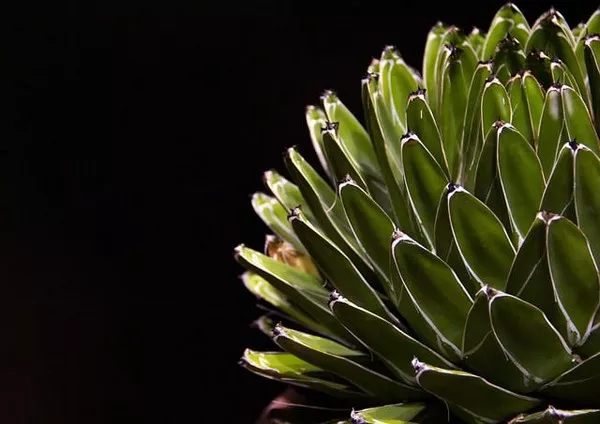Succulents, with their unique ability to store water in their thick leaves and stems, have captured the fascination of plant enthusiasts and scientists alike. While their reputation for being compact and low-growing is well-known, there are instances when these hardy plants surprise us by growing tall. The phenomenon of succulents growing vertically has garnered attention due to its intriguing nature and potential implications for both gardening and botanical research. This article delves into the underlying reasons behind why succulents might grow tall, exploring the environmental, genetic, and physiological factors that contribute to their upward ascent.
Environmental Influences
One of the primary drivers of succulent growth, including vertical expansion, is the environment in which they are situated. Succulents are known for their adaptability, and different species have evolved to thrive in varying conditions. Light, for instance, plays a crucial role in their growth patterns. When succulents receive insufficient sunlight, they may elongate in their quest to reach more favorable light sources. This behavior, known as etiolation, is a survival mechanism that allows the plant to optimize photosynthesis. Consequently, succulents grown indoors, where natural light might be limited, may exhibit taller growth as they stretch toward windows or artificial light sources.
Similarly, soil composition and moisture levels can impact succulent growth. In arid regions, succulents grow tall as they compete for scarce water resources. When a succulent detects higher moisture content deeper in the soil, it might extend its roots downward and grow taller to access these reserves. This adaptation is especially evident in species native to rocky or hilly terrain where water retention in the soil is variable.
Genetic Variability
Genetic factors also contribute significantly to the propensity of succulents to grow tall. The genetic makeup of each individual plant plays a role in determining its growth characteristics. Some succulent species naturally exhibit taller growth habits as a result of their genetic predisposition. This can be seen in various genera, such as Aeonium, which includes species like Aeonium arboreum, known for its tree-like growth habit.
Furthermore, selective breeding and hybridization have led to the development of succulent varieties with distinctive growth patterns. As breeders aim to create unique and visually appealing plants, they may inadvertently select for genes that encourage taller growth. Over time, these genetic modifications can result in succulents that deviate from their original compact forms.
Physiological Adaptations
The physiological responses of succulents to environmental cues are essential in understanding their vertical growth. One such response is known as geotropism, where plants grow in response to gravity. While most plants exhibit positive geotropism, growing roots downward and stems upward, succulents can exhibit negative geotropism, particularly when seeking sunlight. This phenomenon enables them to bend or elongate their stems in various directions to maximize their exposure to light sources, thereby promoting taller growth.
Additionally, the hormonally regulated elongation of cells contributes to the upward growth of succulents. Auxins, a class of plant hormones, are responsible for cell elongation and expansion. When a succulent detects an uneven distribution of light or water, it may produce higher levels of auxins on one side of the stem, causing cells on that side to elongate more rapidly. This differential growth results in bending or curving of the stem, leading to the observed vertical growth.
Cultural Practices
Human interventions, such as cultivation techniques and care practices, can also influence succulent growth patterns. Pruning, for example, can impact the overall shape and height of a succulent. Regular pruning can encourage branching and lateral growth, resulting in a more compact plant. Conversely, a lack of pruning or selective pruning of specific stems can encourage vertical growth.
Furthermore, pot size and planting depth can play a role in succulent growth. If a succulent is placed in a small pot or planted at a shallow depth, it might outgrow its container and elongate its stems in search of additional resources. Adequate spacing between succulents during planting can prevent overcrowding and reduce the need for vertical growth.
Conclusion
The phenomenon of succulents growing tall adds an intriguing dimension to the study of plant growth and adaptation. As we explore the myriad factors that contribute to their vertical ascent, it becomes evident that a combination of environmental conditions, genetics, physiological responses, and cultural practices interact to shape their growth patterns. Understanding these factors not only enriches our appreciation for these remarkable plants but also offers insights that can be applied to horticulture, gardening, and even broader botanical research.
Whether driven by a quest for light, an innate genetic predisposition, or a response to available resources, tall succulents remind us of the incredible resilience and adaptability of life forms. By unraveling the mysteries behind their vertical growth, we can cultivate a deeper understanding of the intricate relationships between plants and their environments. As we continue to explore the world of succulents, we gain valuable knowledge that enriches our horticultural practices and broadens our comprehension of the natural world.


